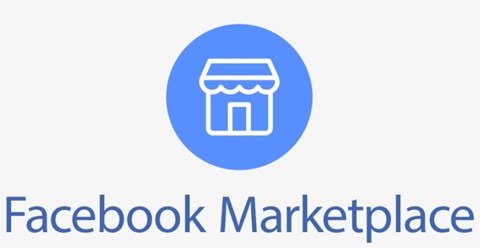With all the choices out there of platforms and marketplaces to sell on, it can be confusing what each one offers and what the positives and negatives of each one might be. If you would like to learn more about the pros and cons of selling on different platforms, please read on.
eBay

We’ll start with the most well-known selling platform, eBay. Originally known as AuctionWeb, eBay was founded in 1995 by Pierre Omidyar. Little did he know, it would grow into the giant that it is today.
One of the positive points of eBay is its global audience because it has the widest reach of all the platforms. It’s easy to get started selling on eBay. Create an account and get a few ducks in a row and you are ready to start. You have different selling options available. You can sell your items on auction or even set your listing to accept offers. If you are a “set it and forget it” type of seller, you can list it for a set price (Buy It Now) and move on.
One of the negatives of selling on eBay is the competition you face. There are millions of sellers on eBay so you need to be strategic, especially if you are selling a common item or one that is plentiful. The different types of fees can be confusing as well. Be sure to brush up on eBay’s fee schedule and how it applies to the items you are selling.
Etsy

Another popular platform is Etsy. Etsy is also a global platform, but compared to eBay, it has a much more limited list of categories that you can sell in. Whereas you can sell just about anything on eBay, Etsy caters to vintage items, craft supplies, handmade goods, and party supplies. Etsy, like eBay, offers its own shipping labels but this can be seen as a pro or a con. Shipping labels will be cheaper when purchased from a third party (such as Pirate Ship) but there’s also the convenience of getting your label right inside Etsy. Etsy’s overall fees can be a little lower than eBay, but with Etsy, you are charged a 20-cent listing fee every four months on each listing.
Poshmark

Next, we’ll cover Poshmark. In recent years, Poshmark has expanded the list of categories you can sell in, so this is good news for sellers. Poshmark is one of the very few platforms (Vestiaire being another) that require you to use their shipping labels. This is another case where it can be a pro and a con at the same time. Many sellers love this because shipping is always one flat price (unless your item is more than 5 pounds and you need to upgrade your label) and you just print your label right from Poshmark. Everything ships priority, regardless of weight. Some sellers would prefer to have the option to use their own labels, but from what I’ve seen, the majority really like Poshmark’s shipping policy. Poshmark does incur higher fees, which is a negative point, but a lot of sellers just raise their prices on Poshmark to recover a portion of those fees. With Poshmark, your funds are released within 3 days of delivery of the item.
Mercari

The next platform we’ll discuss is Mercari. Their listing form is easy and straightforward and you can use Mercari’s shipping labels or a label from a third-party shipping service. As with Poshmark, Mercari also holds your earnings and releases them within 3 days of confirmed delivery to the buyer. If you are in need of those earnings right away, this can be an issue.
Mercari also offers Mercari Local as a delivery option. This is where you can sell locally without having to meet up with the buyer, which we’ll cover below.
Facebook Marketplace

With some platforms, the size of your item can be a hindrance and make it impractical for you to ship that item. However, with platforms like eBay, Facebook Marketplace, and Mercari (under the Mercari Local Program), you can opt for local pickup and/or local courier delivery. eBay offers local pickup so you can sell very large items and all you need to do is make arrangements with the buyer for pick up after purchase. Facebook Marketplace is another good outlet for big and bulky items. Sell your big items locally and again, make arrangements with the buyer and you are good to go. Mercari Local is unique in that a courier will come to pick up the item and then deliver it to the buyer. It’s a local sale but you don’t have to arrange a meetup of any kind. Since a courier will be transporting your item, there are size restrictions but it’s a great option nonetheless.
As for having accounts that are in good standing among the platforms mentioned, eBay is the one that you really want to keep an eye on. As a reputable seller, you will want to be in good standing on all of the platforms you sell on and provide the best customer service possible. However, on the occasion where you might need to favor one over the other, favor eBay. For instance, if you sell the same item on eBay and Poshmark, do not cancel the sale on eBay unless absolutely necessary. eBay penalizes your account and it is highly recommended that you not fall below standard with your account.
As we can see, the pros and cons of selling online vary from platform to platform. Nonetheless, each marketplace creates the opportunity for anyone to become a small business owner because of the various structures and policies that are available on each one.




